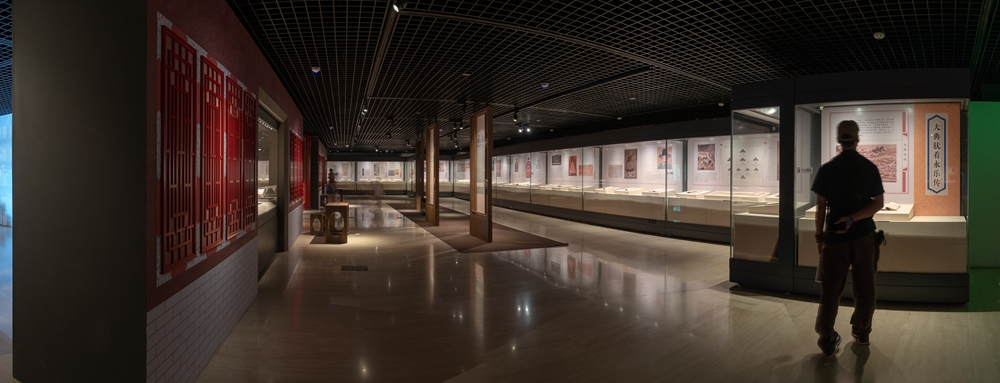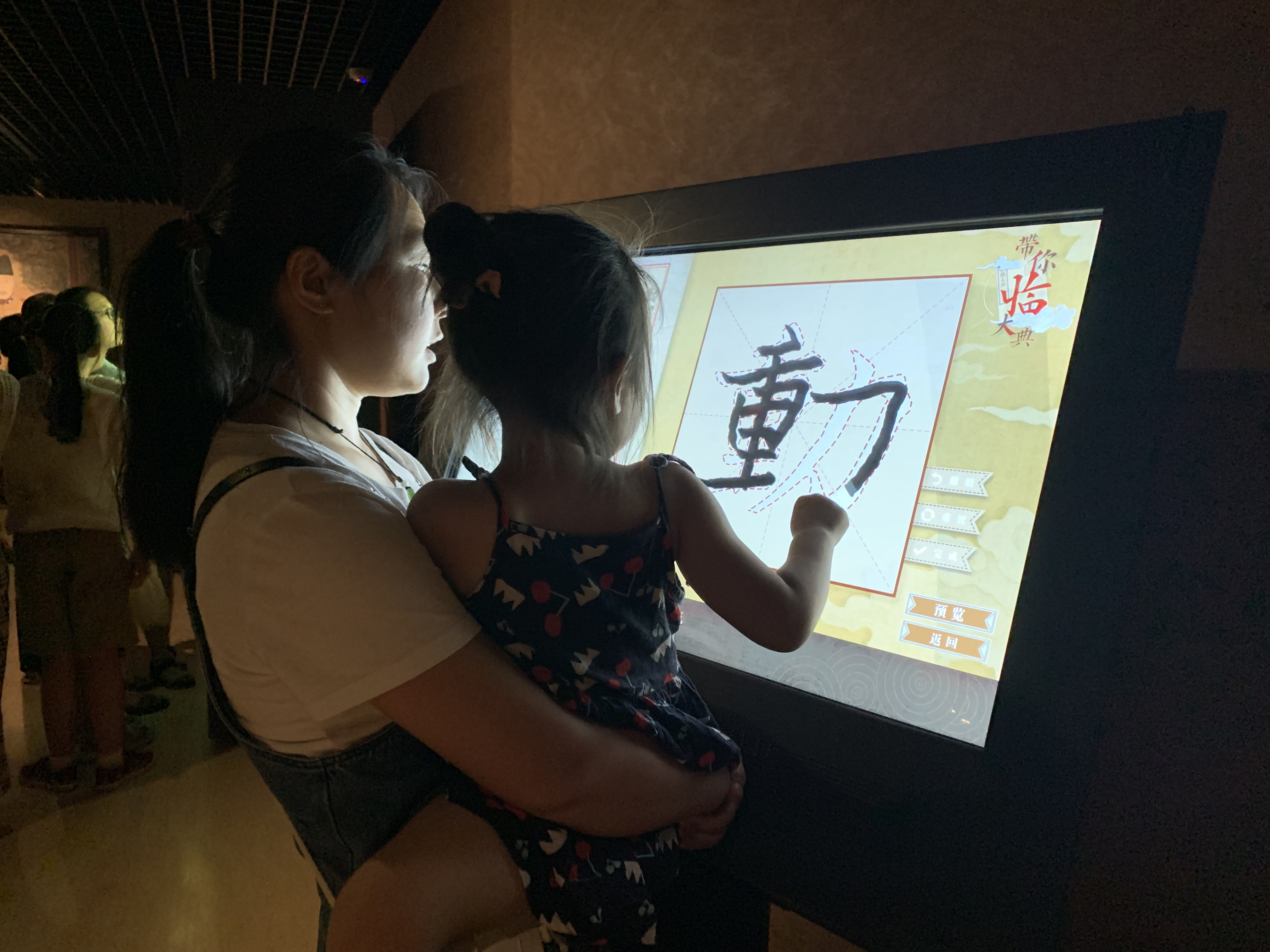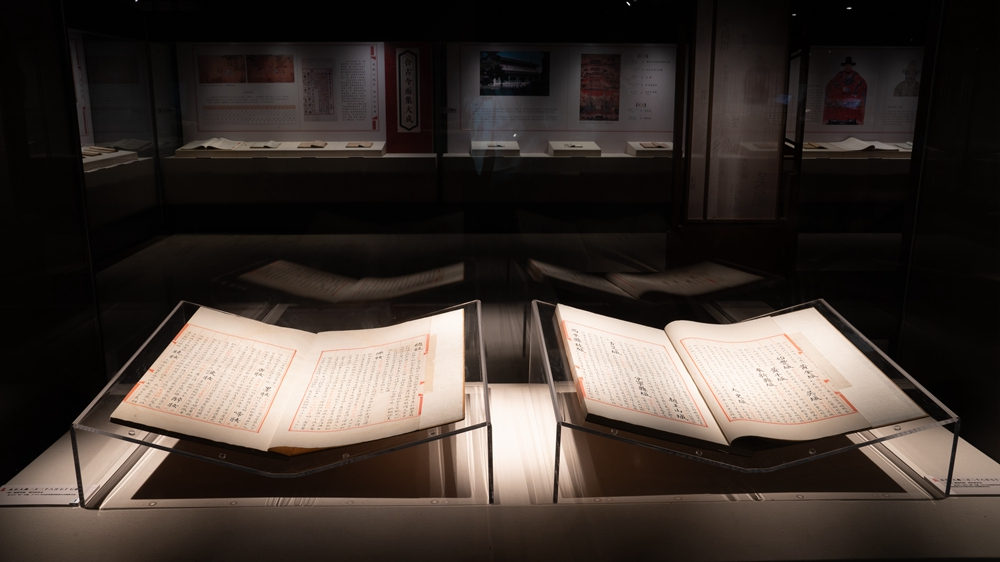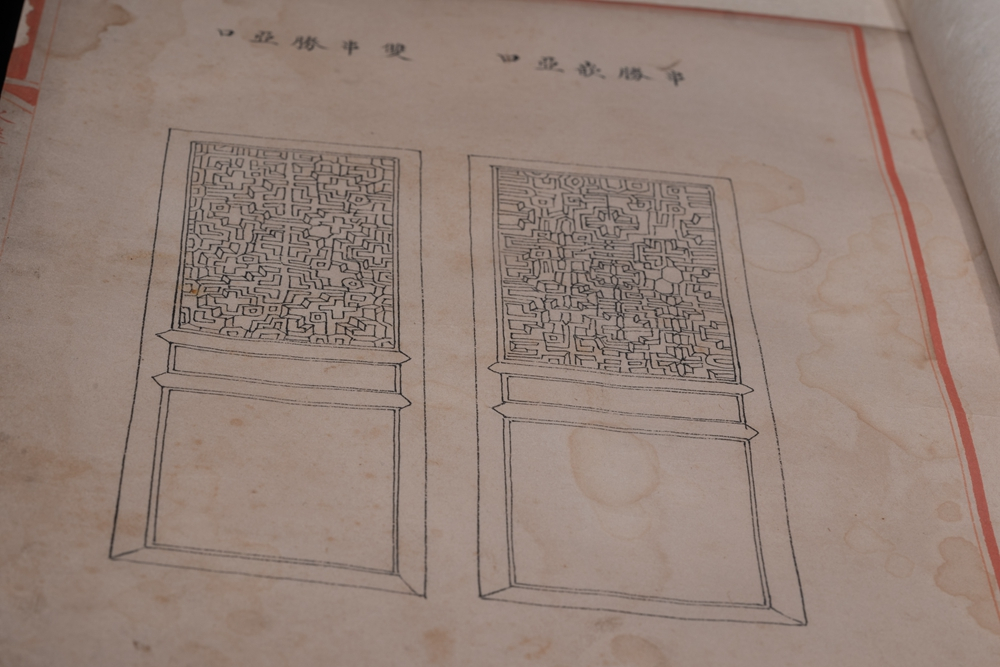

The center hall of the Yongle Encyclopedia exhibition /Photo by CGTN's Qu bo
Comprised 22,937 chapters, in 11,095 volumes, occupying roughly 40 cubic meters, and using 370 million Chinese characters (six times as many as the Encyclopedia Britannica), Yongle Dadian, or the Yongle Encyclopedia, is known as the largest encyclopedia in Chinese history.
Now, 12 volumes of Yongle Dadian, as well as other precious books are on display in the National Museum of Classic Books.

The first part of the Yongle Encyclopedia exhibition in Beijing, China. /Photo by CGTN's Qu bo
Commissioned by Emperor Yongle of the Ming Dynasty (1368-1644) and compiled by officials and scholars, the encyclopedia incorporated more than eight thousand ancient books in China from the pre-Qin Dynasty to the early Ming Dynasty.
Walking into the exhibition hall, the video playing on a dome-screen leads the audience to the fate of this Chinese classic treasure. The Yongle Dadian was completed in 1408 and has enabled the preservation of literature, anecdotes, and ancient institutions that would be otherwise lost. It also has conveyed the wisdom of Chinese culture for thousands of years.
More copies of the Yongle Dadian are presented to the audience through the exhibition offering interesting sources of knowledge. The encyclopedia was not arranged by subject but with a character system phonetically ordered. The books are written in Chinese calligraphy with different ancient fonts like the Seal script, Clerical and Cursive scrip. All volumes were handwritten with exquisite Chinese brush painting.

The interactive devices allow visitors to write on the screens copying the font from the Yongle Encyclopedia exhibition in Beijing, China. /CGTN Photo
Walking into the center hall of the exhibition, visitors can finally see the 12 volumes of the encyclopedia's official handwritten copy which have been perfectly repaired. After the Second Opium War at the end of Qing Dynasty, many volumes were destroyed in the war fires. With decades of searching, auction and returning from overseas, now 224 volumes are kept at the National Library in Beijing, part of which is showing on this exhibition.

Two volumes of Yongle Encyclopedia's official handwritten copy displayed in a Yongle Encyclopedia exhibition in Beijing, China. /Photo by CGTN's Qu bo

Paintings in one of the volumes of Yongle Encyclopedia's official handwritten copy displayed in a Yongle Encyclopedia exhibition in Beijing, China. /Photo by CGTN's Qu bo
After more than 600 years of vicissitudes of history, Yongle Dadian is the epitome of Chinese classics books' dispersion and inheritance, which makes the exhibition really worth a visit.
Besides the Yongle Encyclopedia exhibition, other exhibitions are dedicated to ancient scripts collection from the National Library recalling the literary history of China.

The entrance of the National Museum of Classic Books /Photo by CGTN's Qu bo
Travel tips:
Location: No.33 Zhongguancun South Street, Haidian District, Beijing
Opening time: 9:00—17:00
Closed on Monday
Free visit with a valid ID

Copyright © 2018 CGTN. Beijing ICP prepared NO.16065310-3
Copyright © 2018 CGTN. Beijing ICP prepared NO.16065310-3